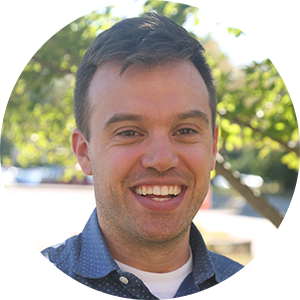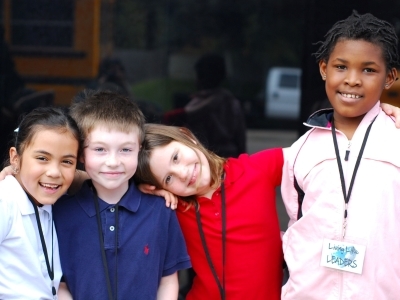Teachers: How to Reconnect with Your Purpose for Teaching
Topics

When educators design and create new schools, and live next gen learning themselves, they take the lead in growing next gen learning across the nation. Other educators don’t simply follow and adopt; next gen learning depends on personal and community agency—the will to own the change, fueled by the desire to learn from and with others. Networks and policy play important roles in enabling grassroots approaches to change.
Three simple, research-backed ways to help teachers reconnect with their purpose and combat burnout.
I didn’t start feeling the effects of burnout until my third year as a school counselor. I had spent the last 10 years as a counselor working with low-income first-generation high school students, but I had recently transitioned to working in a school. I came into the role with the best of intentions—I wanted to work as closely as possible with the students who needed it the most. I was energized by building meaningful relationships, asking young people big, important questions, and helping them make the biggest decision of their young lives, whether that was in high school or beyond. I loved everything about the work yet the spectre of burnout seemed to hover over me. It didn’t matter how much impact I was having, how much growth and change I saw in my students; I could feel the wheels coming off.
Sadly, I’m not alone. There is a growing body of research showing that more and more teachers are leaving the profession, citing stress and burnout as a key reason. A recent report found that teachers experience more daily stress than an emergency room doctor. Combined with chronic underfunding, it shouldn’t come as a surprise that an estimated 41 percent of teachers leave the profession within five years.
Rising stress, burnout, and mental health problems among teachers is also coinciding with the rise of student mental health issues. Interestingly, these two issues are never discussed in tandem; they’re seen as separate issues. Based on my work all across the country, I’ve realized that teachers are actually struggling with the same issue that afflicts our students: a lack of meaning.
Teachers don’t enter the profession lacking meaning. Teachers start their academic careers with dreams of changing young people’s lives: the Gates Foundation found that 85 percent of teachers enter the classroom to make a positive impact on young people’s lives. But under the constant pressure of meeting national education standards, classroom management, lesson planning, and adapting to constantly changing standards, those dreams eventually fade away. Under the overwhelming daily pressure to just keep their heads above water, teachers become disconnected from their original purpose as an educator. It’s this meaninglessness in the role, combined with intense external pressure, that is the recipe for the burnout afflicting both teachers and students.
Luckily, there are some simple, research-backed ways to help teachers reconnect with their purpose and combat burnout. Below are some adapted resources we use at Project Wayfinder, an organization devoted to helping students and teachers develop and live their purpose.
Step One: Reconnect with Your Why
If you’re a teacher, imagine that you could only teach one lesson to all your classes. Which lesson would you choose? Now, ask yourself, after teaching that lesson, what impact would you want that lesson to have on your students? If you achieved this impact, what would the impact of THAT impact be? For example, I’m writing this article to teach educators about the power of purpose. I hope that by reading this article, teachers can bring the principles of purpose to their classroom. If they do that, they then can help young people find their own purpose. With that, I hope they become empowered to pursue meaningful and fulfilling lives. By continuing to ask ourselves “why” a goal is important, we can begin to unearth the deeper intentions we have that drive our daily actions and behaviors. By reconnecting to the impact we as teachers want to have on students, it can remind us why we got into the profession in the first place.
Step Two: Craft Your How
Once you have reconnected to the impact you want to have as a teacher, it’s time to begin exploring how you could go about making good on that impact in the classroom. Innovative research by Amy Wrzesniewski from Yale University can help. Wrzesniewski’s research found that professionals who had found purpose in their work had done so by “crafting” their role to align with what they cared about. Called “job crafting,” it’s an effective tool that can help teachers reconnect to their purpose. Although teachers face enormous pressures to make sure their students score well on standardized tests and master knowledge in a variety of subjects, how teachers go about reaching those targets is up to each teacher.
To better craft your role in the classroom, it’s helpful to remind yourself of the character strengths that make you your best self. Take the VIA Character Strength Survey or simply review the list of character strengths and choose the three or four you use the most in your classroom. Now consider: How could you use your strengths to make the impact you identified in the activity you did above in Step One. For example, two of my strengths are “zest” and “creativity”—one thing I love to do in the classroom is design interactive and experiential team-building activities that teach students about the research on youth purpose. What could you do to use your strengths in the classroom? How might you design a class project, assignment, or classroom discussion that utilizes your unique skills as a teacher? The more we can craft our roles in the classroom, the more meaningful the work becomes.
Step Three: Communicate Your “Why” to Students
Teachers work incredibly hard with students, pushing them to become their best selves. However, too often we don’t explicitly explain to students how we’re trying to help them grow, or why we feel that growth is important. It can be incredibly powerful not only for students, but for teachers as well, to explicitly state why we’re teaching them. Social psychologist Susan T. Fiske has found that to build meaningful relationships with people, we need to communicate two things: our intention and our competency. That is, when a young person walks into our classroom, they ask themselves, “What is this teacher’s intention for me?” and “Do they have the skills to follow through on that?” When young people know our positive intentions and believe we can make good on them, they’re much more willing to trust us. Every teacher I know got into the profession to build relationships with young people; explicitly sharing the intentions with them that you identified in Step One is the best place to start.
It’s equally as powerful to ask students directly: “How can I help you succeed? How can I be most helpful?” Often times, students’ answers can be surprising. As a school counselor, it often felt like it was my role to dole out sage wisdom to young people. However, most students found it most helpful when I just listened. Ask your students what they want and need; not only does it show that you care about them, but it also validates their needs and desires. And it can make your role in their lives all the more purposeful. Taking them seriously will make them take you—and school—more seriously.
Often when talking about teacher burnout, we point to systemic issues as the culprit. But don’t overlook the small changes that can make a big impact. Each of the three steps could be done in one class. While systemic challenges absolutely need to be addressed, we should spend an equal amount of time thinking of the psychological and mindset changes we can make as well. Doing so can make education more purposeful for everyone.
Related Articles
What about Teaching Actually Matters? - What can teachers look for in a K-12 education system of urgency, efficiency, and transactional outcomes to know they are keeping students' and their own humanity at the center?
Rethinking Wayfinding - People are more successful (and happier) when they find the right type of work, in the right setting, for their skills and interests. The key question, then, is how does one find the right match?
It's a Tough Time for Teachers. Here's Why I'm Joining the Profession. - As an African American man who is determined to shape young lives and lift up his community, Harrison Gaskins can’t think of a more powerful job.
Photo at top by Bryan Dowdey.




